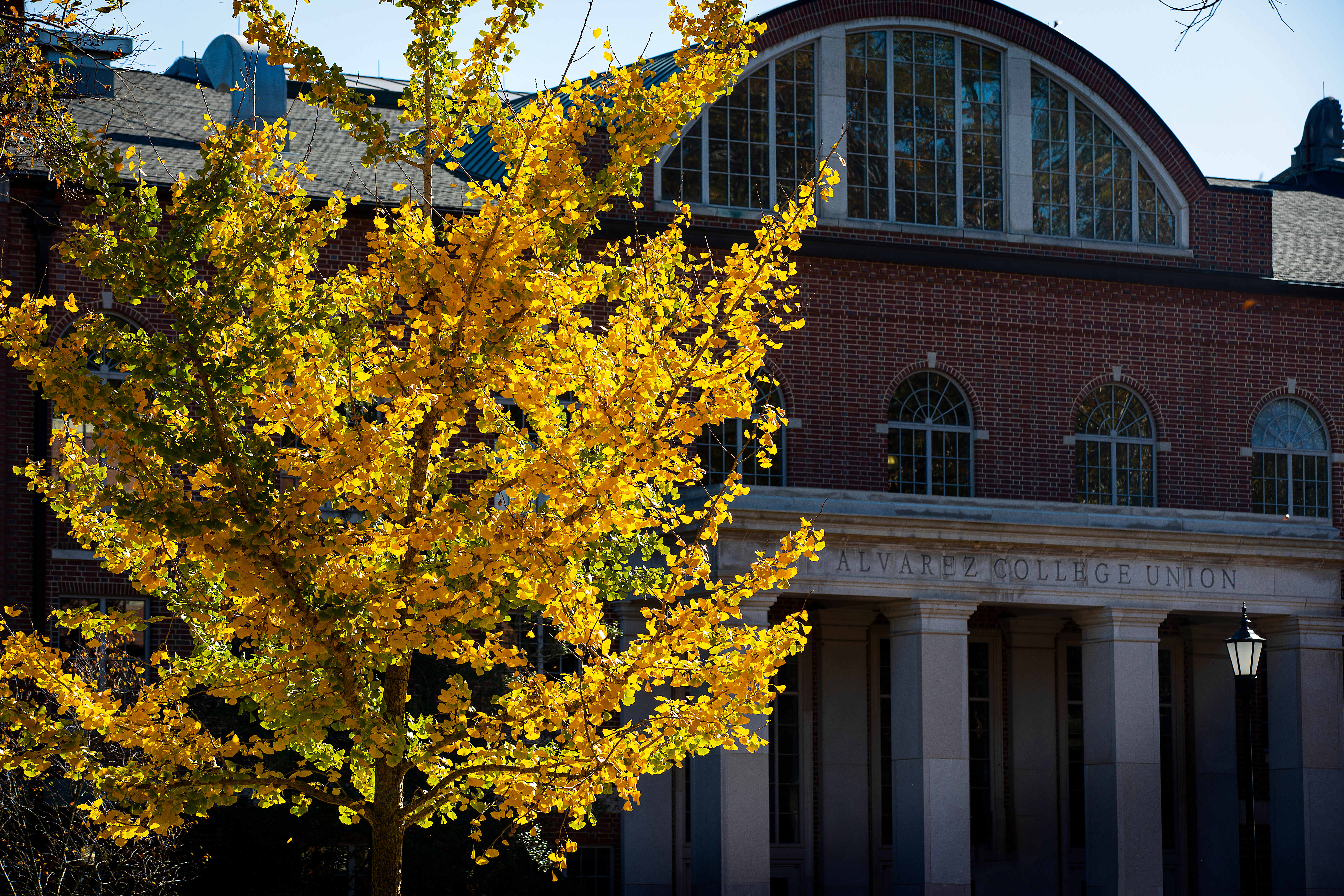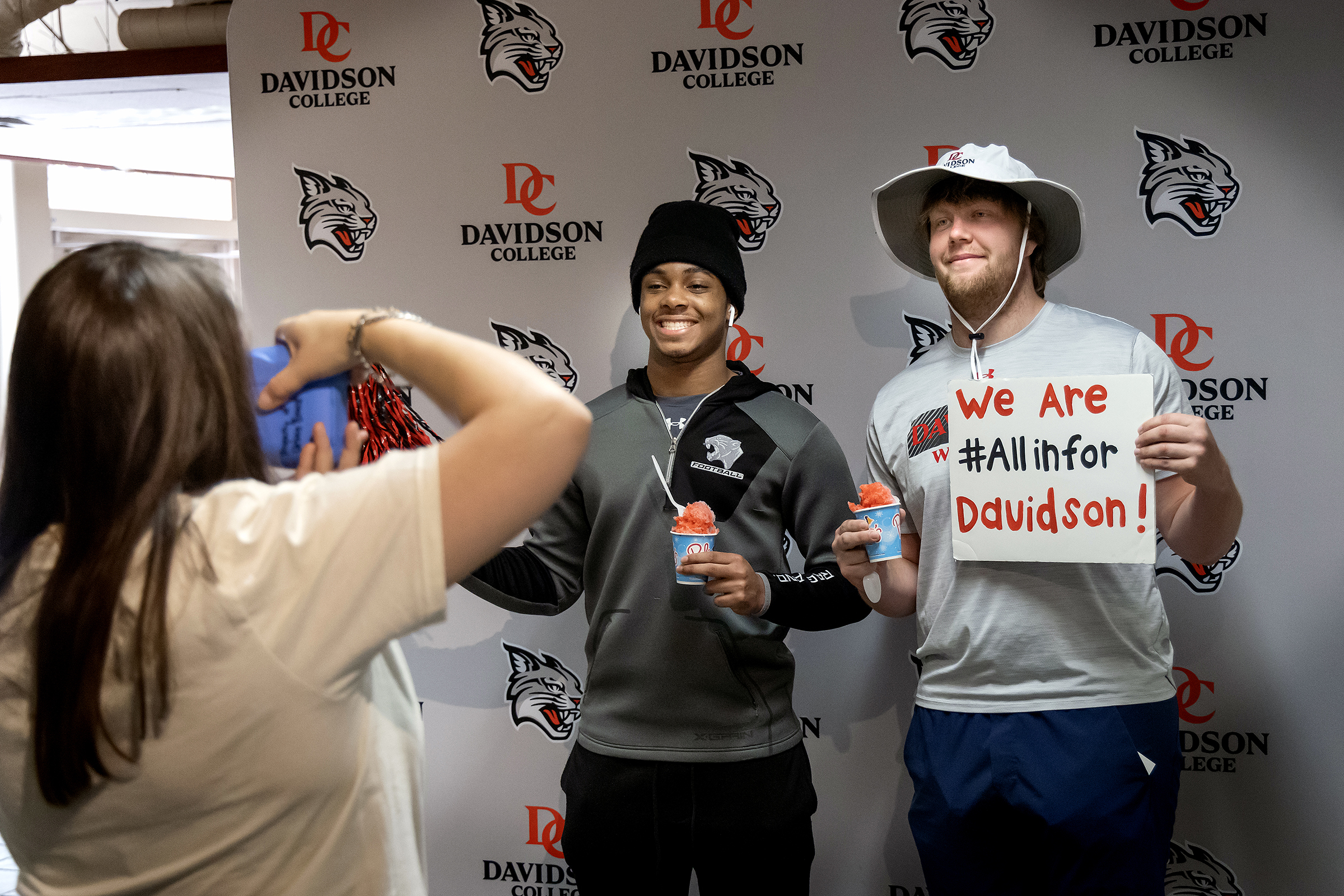By the Book: Text Upends Conventional Teaching, Ignites Student Engagement
November 8, 2018
Biology professors and high school biology teachers across the country are bringing evolution, climate change and social topics such as race and gender identity into their classrooms at a politically divided time when such discussions could provoke strong reactions.
And it's all Davidson College Professor Malcolm Campbell's fault.
Campbell, a biology professor and director of Davidson's James G. Martin Genomics Program, teamed up with Math Professor Laurie Heyer and Biology and Environmental Studies Professor Chris Paradise to write a biology textbook, Integrating Concepts in Biology. The book, introduced in 2014, is aimed at advanced high school or introductory college classes. It upends conventional teaching in two ways: how to teach biology and what topics are meaningful to that class.
"I have been teaching for 20 years," said Julie McConnell, Advanced Placement biology teacher at Hough High School, in Cornelius, North Carolina. "It has revolutionized the way I teach."
Teachers and professors report dramatic results in test scores and in college preparation, and those instructors, echoing the textbook itself, back up their conclusions with data.
On Friday, the National Association of Biology Teachers will present Campbell with their highest honor for college and university teaching at the association's conference in San Diego.
More than 6,000 students now have used the textbook at:
- 34 colleges and universities, from California's San Jose State to Bowdoin College, in Maine;
- Howard Community College, in Maryland; and
- 11 high schools, from Salmon, Idaho, to Shelby, Michigan.
Constructing Knowledge
Daniel Faraj, a senior in McConnell's class, wants to be a heart surgeon but first has to get through AP biology, using Campbell's book. Faraj was quick to identify how it differs from virtually every other class.
"It gives you an approach that is not a lecture that you memorize," Faraj said. "You understand why you learn what you learn."
Teachers traditionally—and, quite often, still do—present information to students, expect them to digest it and, then, ask them essentially to recite it back on a test. The traditional biology textbook is packed with graphics, charts and paragraphs of text about each topic that students are expected to master; and, then, they take a test.
Campbell said research and experience show that people learn best when they construct their own knowledge.
"Other books say, ‘Here's what you need to know.' Our book gives them the data to figure out what they need to know," Campbell said. "Rather than fight how the brain works, we harness it."
Their book presents each topic as a question and then provides sets of data that students analyze and interpret, like scientists, to reach conclusions. They interpret the data instead of reading someone else's interpretation of it. One case looks at why allergies get worse over time, and students analyze data that shows them that, with each exposure to an allergen, the body produces more or stronger antibodies, which exacerbates the allergic reaction.
"People are exploring and looking at figures and discussing figures like scientists," said Doug Luckie, a physiology professor at Michigan State University, who uses the textbook.
Real-World Questions
The textbook's other major shift is to pull in controversial topics from which textbooks and teachers often shy to avoid offending a student or angering a parent or school board member. Campbell said a professor or teacher has to decide if they want to introduce those topics before they choose to use the book.
"Students today are coming to their biology classes already confronted by, dealing with and sensitive to complex topics such as sexual identity, race and the impact humans are having on the planet," Campbell said. "Introductory biology should be a natural place for addressing many of these real-world questions."
One case looks at how most Americans define race by skin color. Students interpret data that show all humans evolved from common ancestors in Africa. Then they examine genetic data about how genes that can affect all skin colors, from Sweden to South Africa, were present in Africa before humans migrated out of that continent. They examine data showing the large range of skin color genes that are still present in modern Africans, resulting in skin tones that vary substantially across that continent today. Students conclude that you cannot use skin color, or the genes that affect skin color, to distinguish races.
In a sexual identity case, students examine DNA data that shows mutations that can produce a male with XX chromosomes and a female with XY chromosomes. In other words, some people are neither fully male nor fully female. Students examine the case of a 17-year-old boy whose breasts were growing. A DNA test showed he had XX chromosomes as well as a gene normally located on the Y chromosome. The students conclude that two categories of sexes are insufficient to explain all the complexities of how humans vary in the real world.
"[This book] allows students to think about ways they can use the knowledge they are gaining outside the classroom," said Elizabeth Forrester, who teaches AP biology at The Baylor School, a private high school in Chattanooga, Tennessee. "They look at issues where there is no one right answer. It's that critical thinking that is so important."
Getting Results
As are the results. Michigan State has tracked learning in its introductory biology courses for years, partly by using a selection of questions from the Medical College Admission Test (MCAT). Luckie has been using Campbell's book for four years. Last year all of his students were in the top 20 percent of the range of scores across all previous years.
McConnell started using the book in 2014, and the percentage of her students achieving the highest scores, a four or five, on the national AP test has jumped from 46 percent to 63 percent, while the number of students in her class nearly doubled. The percentage receiving those same scores among all students in North Carolina during those years remained flat at around 30 percent.
Forrester said the biggest change since using Campbell's book is the conversations in class. Students increasingly ask questions, sometimes drilling down on a topic for the entire class period.
"By the end of a year, the class feels more like a lab meeting than a lecture," she said. "Students will come back and say how much their ACT scores have gone up, or a graduate will visit and say how her biology professor asked how she knows all this stuff."
Mark Johnson
markjohnson@davidson.edu



